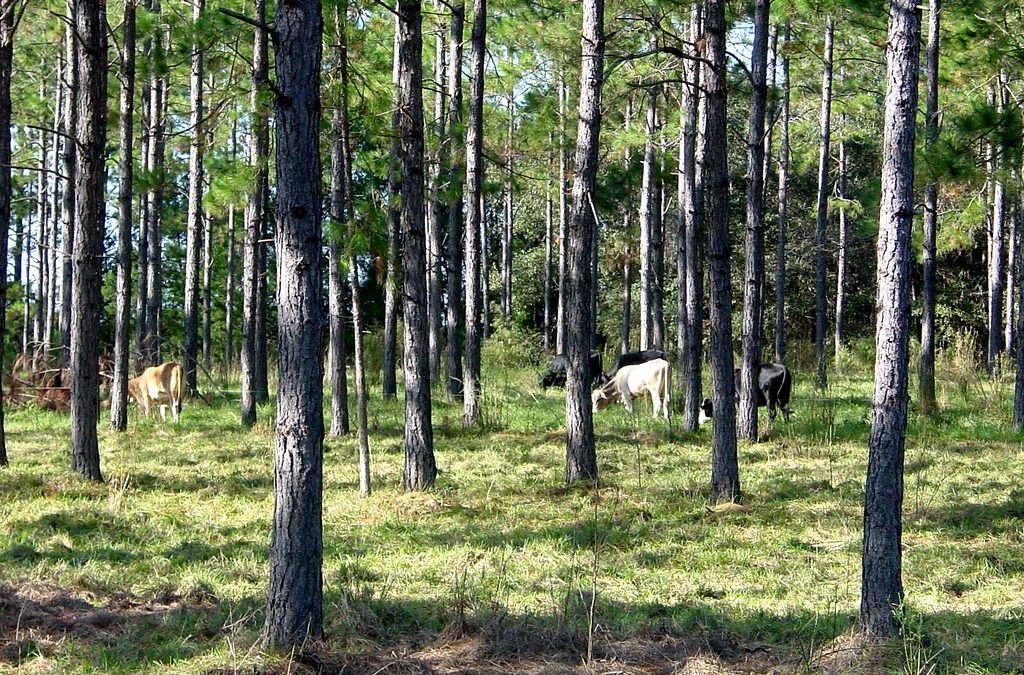Traditional farming systems that produce agricultural products in landscapes that mix annual and perennial crops, livestock, and trees are common throughout the world. These farming systems, called agroforestry in the U.S., share many proven benefits including increased land productivity, the opportunity to produce diverse, high-value agricultural products, improved soil health, water quality and wildlife habitat, and the drawdown of carbon from the atmosphere to slow climate change. These benefits make agroforestry the idea strategy for the restoration of degraded lands and the resilient production of food, fiber, fuel, medicinal and cultural products over the long-term.
Agroforestry evolved over time through the relationships between people and the ecosystems that they inhabited. There are resilient and productive examples of agroforestry farming in nearly every kind of ecosystem on earth. As the world’s original and most successful “forest farmers,” Indigenous peoples have a lot to teach us about the agroforestry practices that work best in a specific place.
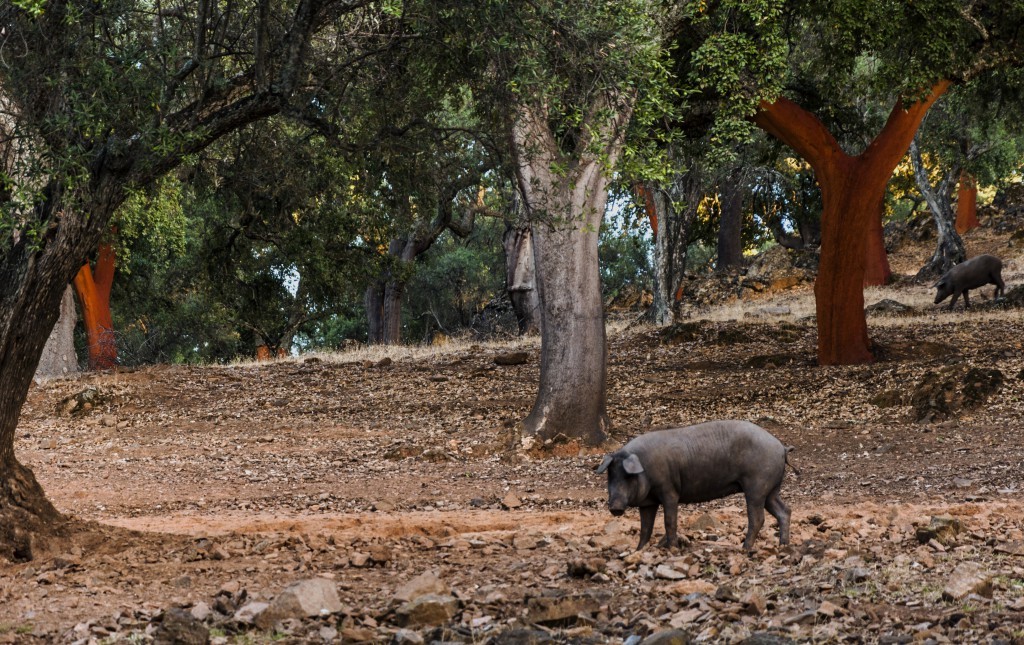
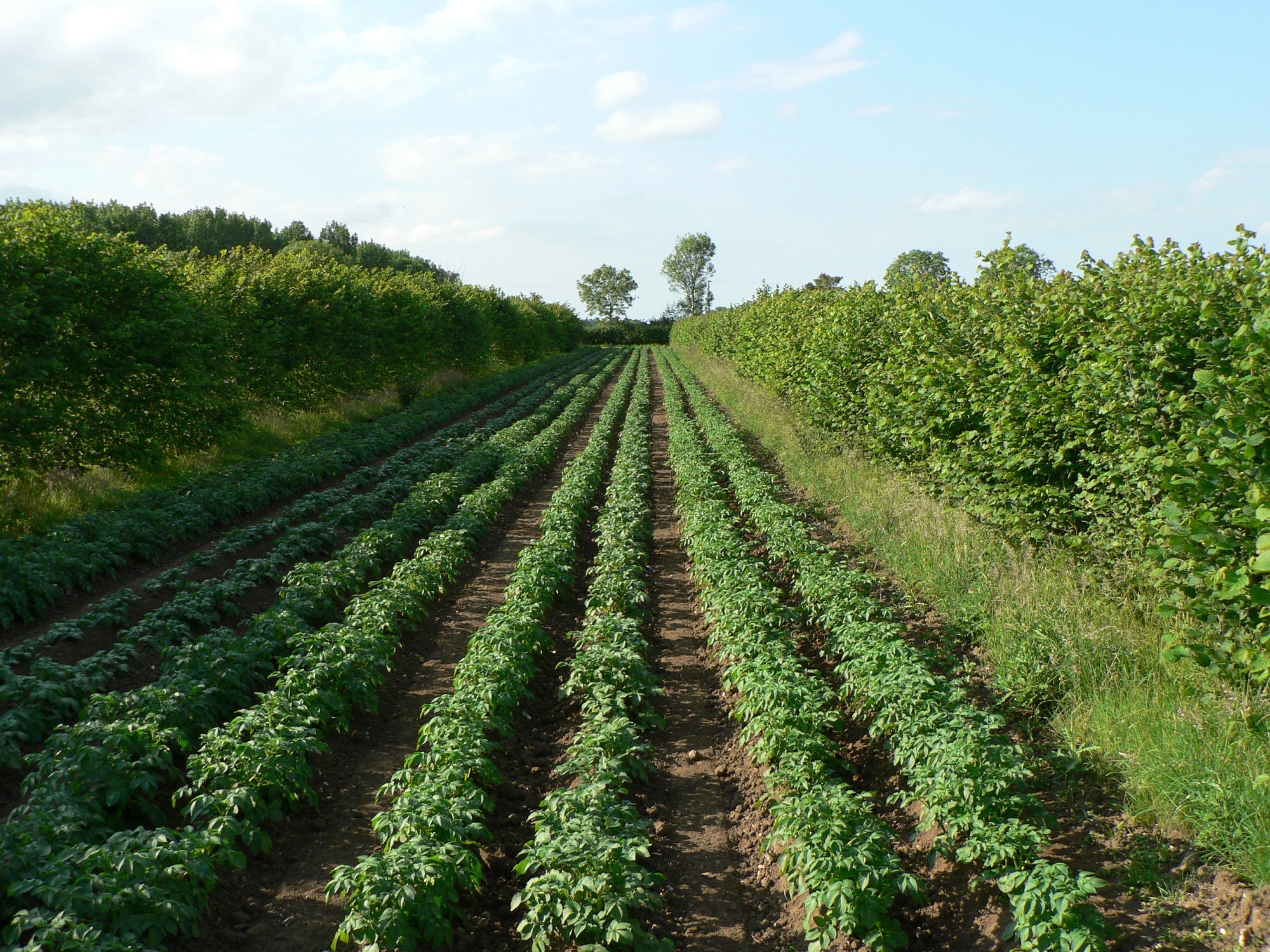
The Agroforward Project explored the traditional agroforestry farming systems of Europe to develop new agroforestry practices that enhance the sustainability and resilience of modern European agriculture. On the left is an image of swine production in the Dehesa, a traditional Spanish agroforestry system that produces livestock in an oak savana ecosystem (Credit Jose Losada CC-BY-2.0). On the right is an image of a modern agroforestry system in England that produces potatoes and hazelnuts (Credit Agroforward Project CC-BY-NC-SA-2.0).
The Woodland peoples lived well for thousands of years in the North Carolina Piedmont. They cultivated a great diversity of nutrient-rich and tasty fruits, vegetables, herbs, and meats in the forests and savannas of the region as shown in the images below. They managed the forests with fire to cultivate the wild foods that they depended on and farmed annual crops like corn, beans, gourds, and tobacco to supplement their wild food supply.
The first permanent villages in the region were developed by Woodland peoples near the rich soils and level landscapes best suited for farming annual crops in the floodplains of the Catawba and Yadkin River watersheds. At Catawba Run, we are working to integrate the wisdom of the first forest farmers of this land with the best sustainable agroforestry methods of today as a first step towards healing the land and transforming its degrated forests and agricultural fields into healthy, productive, and resilient agroforestry systems that will sustain land and people far into the future.

Plants growing on the forest floor and in grasslands, such as wild potatoes, lettuce, onions, ramps (pictured above), chickweed and wild mustard greens the vegetables and herbs of the Woodland peoples.

Woodland peoples foraged forest fruits like crabapples, cherries, mulberries, persimmons (pictured above), grapes, and nuts from the forest such as chestnuts, acorns, hazelnuts, black walnuts, chinaquapin and hickory nuts.

Mayapples (pictured above), pokeweed, solomon’s seal, mushrooms, milkweed and many other grassland and forest floor plants foraged for food and medicines. Woodland peoples depended on hundreds of wild plant species for food, medicine and raw materials.

Large animals like deer, bear, bison, and elk provided meat as well as many other useful materials. Smaller animals also found their way onto the table, including beaver (pictured above), raccoon, opossum, squirrels, and many kinds of large and small birds: ducks and geese, turkey, partridge, pheasant, dove, lark and crow.
Agroforestry Systems
Forest farming, silvopasture, alley cropping, and riparian buffers are four different kinds of agroforestry practices that produce crops and livestock in combination with trees. All four of these practices will be implemented at Catawba Run over the next 5 years.
Forest farming,or multi-story cropping, is the cultivation of high-value crops under the protection of a managed tree canopy. Examples of these high value crops include mayapple, ginseng, ramps, and even nuts and fruits like pawpaw and chestnut. Forest farming often incorporates or makes use of native or naturally occurring plants and trees. Indigenous people were the first “forest farmers” to harvest and use many of the same forest products that we value today.

Oyster mushrooms growing on a tree in a forest farming system. Catawba Run will demonstrate different forest farming strategies to produce a diverse mix of products such as mushrooms, fruits, nuts, culinary and medicinal herbs and lumber.

A silvopasture similar to this loblolly pine – goat – forage system will produce food, natural fiber and lumber in Catawba Run’s loblolly pine plantation.
Silvopasture integrates forage plants, trees, and grazing animals to create a landscape that produces a mix of livestock products, such as meat, milk and fiber, along with fruits, nuts and wood products. Silvopasture mimics savana ecosystems which are mixed grasslands and open forest. The Woodland peoples used fire to maintain the savana ecosystems because this landscape was favored by some of their most important food plants and animals. In modern day silvopasture farming systems in the U.S., cattle, goats, and sheep are often grazed in open forests of hardwoods, softwoods, and fruit and nut trees.
Alley cropping or intercropping is the planting of rows of trees and shrubs to create alleys within which agricultural or horticultural crops are produced. Common alley crop combinations are chestnuts and raspberries, pine trees and cotton, and chestnuts and winter wheat.

Alley cropping system consisting of pine trees and cotton.
Riparian forest buffers are vegetated areas along rivers and streams which shade and protect the stream from damage caused by adjacent land uses such as intensive farming practices or development. Well-designed riparian buffers also protect the stream banks from damage during heavy rains and flooding and provide a critical habitat for wildlife.
The Old Catawba River flows for nearly a mile through Catawba Run. We have partnered with the Lake James Environmental Association to gather baseline data on river health and water quality as a first step in developing a restoration and management plan for the river and its forested banks.
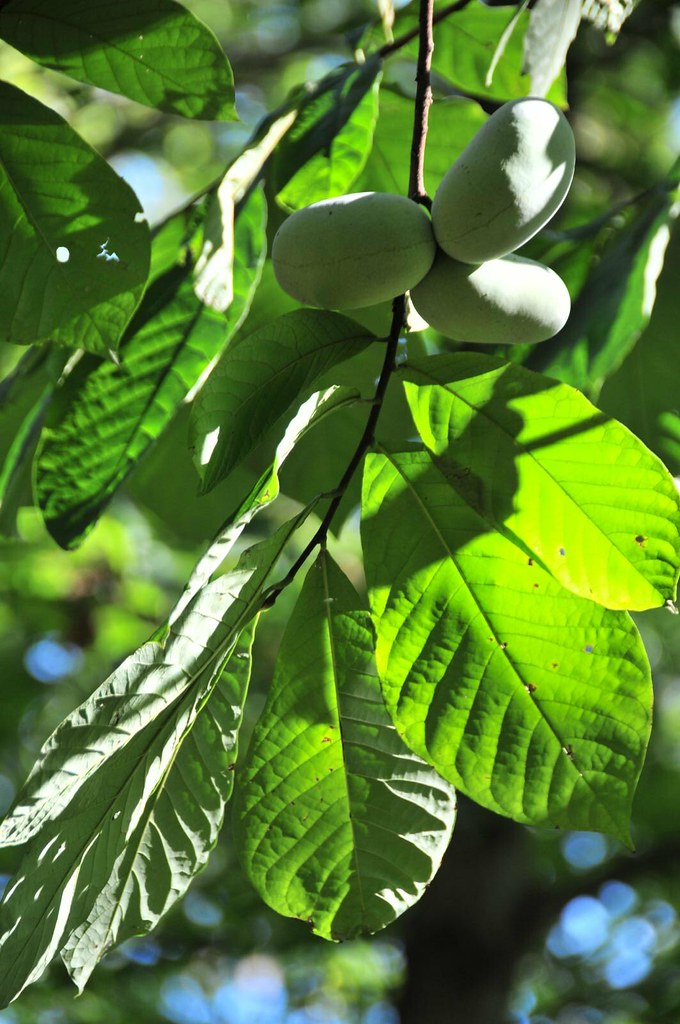
The pawpaw (pictured above) is also called “forest banana.”
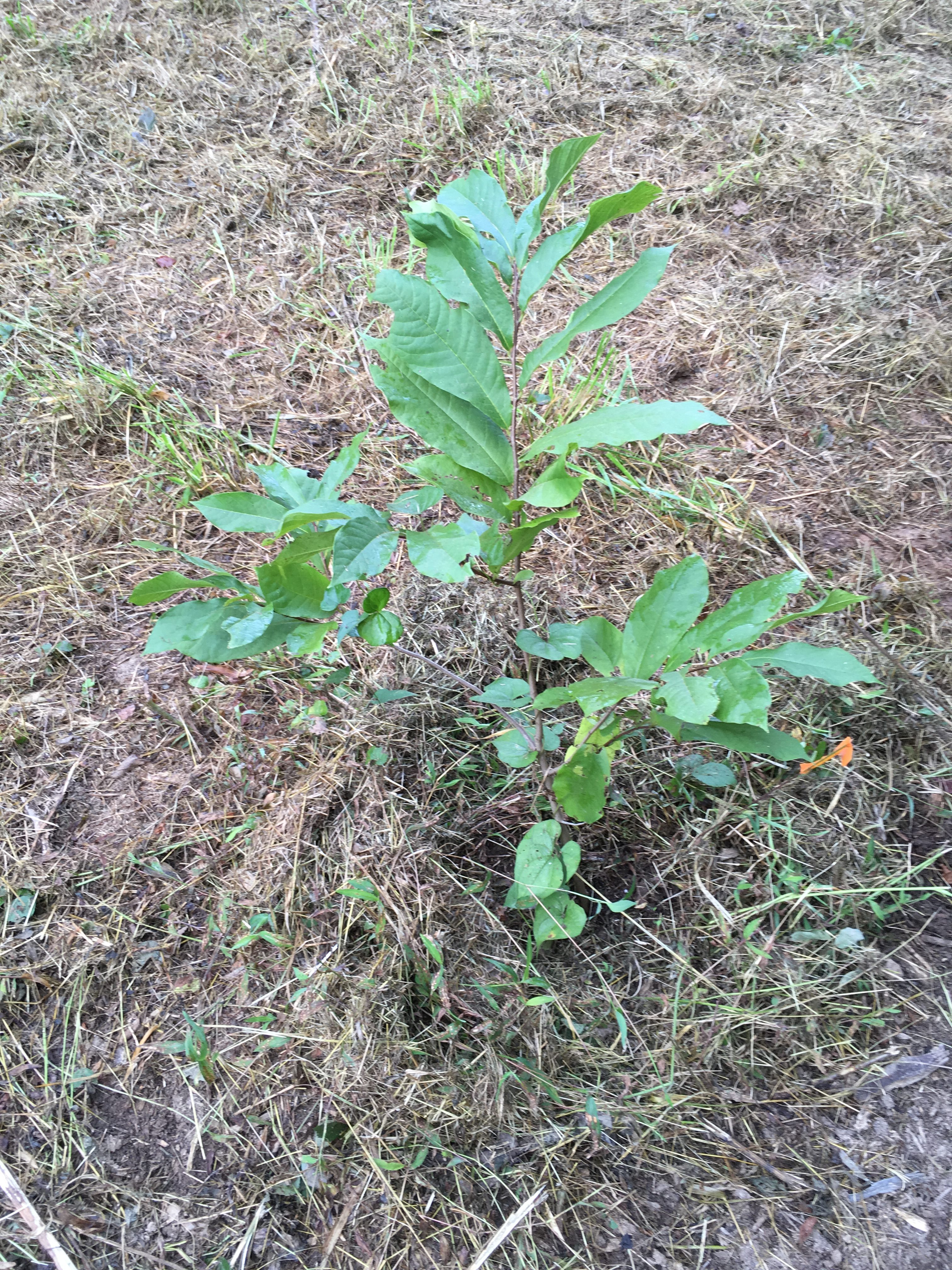
We have planted young paw paw trees in the forested buffers that protect the Old Catawba River as it flows through Catawba Run.
Living Agroforestry at Catawba Run
At Catawba Run we plan to provide living examples of different types of agroforestry practices throughout the land. We are currently working on the creation and maintenance of our chestnut field and forest garden patches which will host mushrooms and other woodland medicinals.
One day soon you can enjoy the sights, sounds, and flavors of agroforestry in all of its incredible diversity at Catawba Run. You will be able to hear the call of livestock as they graze on rich pasture in the comforting shade of loblolly pines, amble through forest gardens filled with flowers, fruits and nuts, and head down to the river to walk among clusters of persimmons and paw paw ripe for the picking. As you bite into a native fruit fresh from the tree, take a moment to remember all the people who have lived, worked, farmed and foraged before you at Catawba Run.
———–
Catawba Run is 275 acres of old growth, unmanaged regrowth, and sustainable pine plantation located in the Piedmont region of North Carolina, near Nebo, just west of Morganton. This land is the setting for Foragable Community’s next demonstration of our shared values: to use ecological management practices and resilience principles to restore the health and wellbeing of degraded landscape, and concurrently have a positive impact on the lives of people who participate in this vision of redemption and renewal.
The Catawba Indian Nation are the descendants of the original inhabitants of the land that we call Catawba Run. The Catawba, or “the people of the river” pronounced yeh is-WAH h’reh in their native tongue, were farmers, renowned potters, and stewards of the land in most of the Piedmont of South Carolina, North Carolina, and Southern Virginia. Foragable Community acknowledges that Catawba Run is on this ancestral land.

